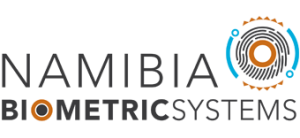Behavioral Biometric Applications
Although biometrics refers to the identification of an individual based on his/her physiological or behavioural characteristics. That is, relies on “something which you are or you do” to make personal identification and therefore offers a better solution for identification. Very few applications employ behavioural biometrics. The behavioural characteristics are actions carried out by a person in a characteristic way and include signature, voice pattern, keystroke sequences, gait (the body movement while walking), lip movement, and blinking, though these are naturally dependent on physical characteristics.
Some types of behavioural biometrics can identify individuals through the person’s interaction with a system entirely unrelated to identification or authentication. Examples include driving, typing, or even just watching how you move a mouse to accomplish routine computer tasks. Depending on the measurement, the sample size, and the reliability of the specific biometric, these identification events can be more or less accurate.
It is important to realise that the accuracy specifications of a biometric system may vary depending on the application. Sometimes accuracy is not critical to a particular use of biometrics and the more important concern is to prevent the biometric measurement from having any significant impact on the user. For example, imagine a biometric system built into a family car. The system watches how you drive, brake, signal and even steer so it knows and understands who is behind the wheel. Since the list of enrolled drivers is small, the system doesn’t have to make very many comparisons and if the system’s purpose is to help decide what music to play from the on-board mp3 collection, making the wrong decision won’t have all that big an impact. Interactive biometrics can be designed to protect families. Continuing with the driving scenario, the biometric system can be designed to perform more complex decisions such as
- Maintain a list of drivers insurance to drivers the car. Therefore, the car can only start once it verifies that the driver is insured to drive the car.
- Ensure that there is someone of adult size in the passenger seat when a teenager or newly qualified driver is driving.
- The inboard cellular phone can start calling the owner of the car when someone completely unknown seems to be driving the car.
- The car can signal should the driver start to fall asleep behind the wheels. This feature is vital in reducing road accidents.
More information on the implementation of biometrics based solutions can be requested from info@namibiabiometricsystems.com.
